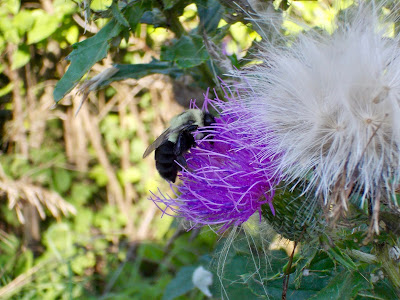I apologize for the week off. Sometimes life just gets in the way. With school, work and now time in the lab, it can be very hard to get out and bird consistently. I know that I keep using this excuse, but I promise that I have been trying to make time wherever I can to report the amazing birds around me and keep up with writing this blog.
That being said, this Friday Field Notes is more of an update on the new undergrad research project that I am taking on. I am very excited about having the opportunity to work in such a great lab so early in my career and hope that it leads to great things in the future.
* * * * *
Recently, I have taken on an undergraduate research project in Dr. Alice Boyle's lab at Kansas State University. It's part of a study being conducted by Dylan Smith concerning Dickcissel (Spiza americana) nesting habits during the recent Kansas drought. My part of this project is to sort and weigh insects to try and determine whether the availability of food sources affect the nesting patterns of this species.
Yesterday being my first day, I have already had a few hiccups. During the weighing of the insects I had a problem with the scale. While weighing the edible samples, the scale had some problems accurately reading the weight. The inedible samples produced a definitive weight in a matter of seconds, but after waiting over 30 minutes the edible samples was still being determined.
Luckily there is a good amount of accessibility in the Boyle Lab, and after bringing the solution up to Sarah Winnicki, one of the grad students in this lab, an email chain was quickly sent out to all involved in the project and past students who helped develop the protocols for this specific part of the project and a few suggestions on how to fix the issue have been discussed. I plan on implementing them in the future and hopefully the issue will be resolved.
* * * * *
 |
| Sorting process of insects. |
 |
| Weighing the edible insects for one sample. |











